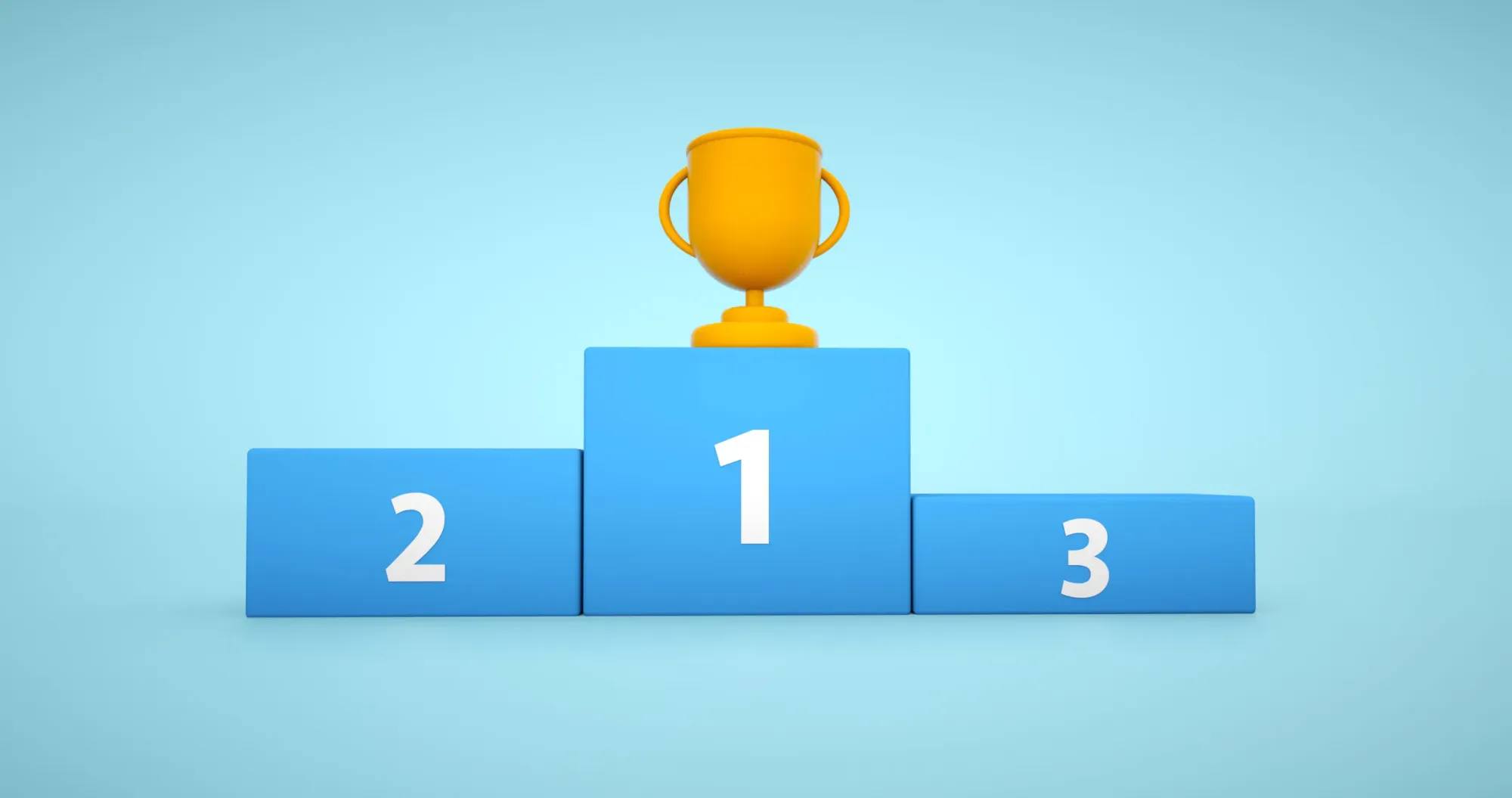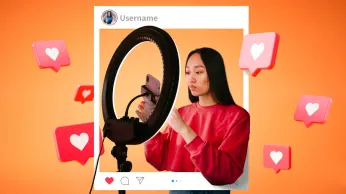On this page
Customer loyalty is more than just rewards; it’s about creating memorable experiences that keep customers engaged. Gamification in loyalty programs offers businesses an exciting way to make customer interactions more interactive and rewarding. This approach incorporates game-like features such as challenges, progress bars, and achievement milestones to make loyalty programs more engaging and fun.
Loyalty gamification taps into customers' natural desire for recognition and accomplishment. By turning routine purchases into an enjoyable, game-like experience, businesses can increase customer retention and participation. With gamification loyalty programs, customers are motivated to keep coming back, eager to unlock new rewards, progress through levels, and compete with others.
This blog will explore how gamification can transform your loyalty programs and provide practical tips to boost engagement and long-term loyalty.
Understanding gamification in loyalty programs
Gamification in loyalty programs is the integration of game mechanics into traditional loyalty schemes to boost customer engagement, participation, and retention. The concept is simple: by making loyalty programs more fun and interactive, businesses can motivate customers to engage more frequently and deeply. But gamification is more than just adding a few badges or points; it involves understanding what drives customer behavior and using those insights to craft a more compelling loyalty experience.
Key elements of gamification in loyalty programs
These elements work together to create a dynamic and engaging experience, encouraging customers to interact more frequently with your brand. By offering rewards, progression, and recognition, gamification taps into the competitive spirit and intrinsic motivation of customers, making their loyalty journey not only more enjoyable but also more valuable.
1. Points and rewards
At the heart of many gamified loyalty programs are points. Customers earn points for making purchases, referring others, or completing specific actions. These points can be redeemed for rewards, much like how players collect in-game points for achievements. The more points they accumulate, the greater the rewards they can unlock, motivating them to keep coming back.
2. Levels and tiers
Levels or tiers are an important gamification element. As customers continue to engage with the program, they can progress to higher levels, unlocking better rewards or exclusive offers. This sense of progression mimics the leveling-up system found in video games, providing customers with a tangible goal to strive for.
3. Challenges and milestones
Introducing challenges, such as completing a certain number of purchases or sharing on social media, gives customers goals to work towards. These challenges create a sense of accomplishment when completed and can be accompanied by rewards or bonuses. Milestones, such as reaching a specific number of points, can trigger special rewards or recognition, adding excitement to the process.
4. Badges and achievements
Badges and achievement icons add an element of recognition and status to loyalty programs. Customers can earn badges for hitting specific targets (e.g., "Top Spender," "Frequent Shopper"). These visual markers of accomplishment tap into customers' desire for recognition, encouraging them to engage more actively with the program.
5. Leaderboards and competition
Leaderboards introduce a competitive element to loyalty programs. Customers can see how they rank compared to others, which can motivate them to increase their participation to reach the top. The competitive nature appeals to customers who enjoy the challenge of outdoing their peers and can drive higher engagement levels.
Why Gamification Works in Loyalty Programs
Gamification works because it taps into intrinsic human motivations. People naturally enjoy challenges, rewards, and recognition. When businesses incorporate these elements into their loyalty programs, customers are more likely to stay engaged and continue participating.
Instead of simply earning points for purchases, they are motivated to engage with the brand in multiple ways, all while enjoying a fun and rewarding experience. Gamification also strengthens the emotional connection between customers and the brand by making their loyalty journey feel more personal and rewarding.
By understanding the psychology behind gamification and applying it thoughtfully, businesses can create loyalty programs that don’t just reward customers but engage them in ways that keep them coming back for more.
Benefits of gamification in customer engagement and loyalty
Gamification has proven to be a game-changer in customer engagement and loyalty, offering many benefits for businesses willing to embrace this innovative approach.Let’s explore the key advantages that gamification brings to the table:
1. Increased customer engagement
Gamification captivates customers’ attention and creates excitement by infusing play and competition elements into loyalty programs.
The interactive nature of gamified experiences encourages active participation, exploration, and interaction with a brand.
As a result, customers become more engaged with the program, spending more time on activities that strengthen their bond with the brand.
A study revealed that gamification increased customer engagement and loyalty by 30%. In another study, 91% of employees stated that gamification made them more productive and increased engagement.
2. Enhanced motivation and loyalty
Game mechanics like points, badges, levels, and rewards tap into individuals’ intrinsic motivation and desire for recognition and achievement. Gamification inspires customers to pursue and complete tasks within the loyalty program actively.
This sense of accomplishment fosters a deeper emotional connection to the brand, leading to increased loyalty and a higher likelihood of repeat purchases and advocacy.
3. Personalization and tailored experiences
Gamification allows businesses to gather valuable data and insights about their customers’ behaviors, preferences, and engagement patterns. This information can be leveraged to create personalized experiences and tailor rewards based on individual customer profiles.Businesses can strengthen the bond with customers, making them feel valued and understood by offering relevant challenges and customized recommendations.
4. Positive brand association and differentiation
A well-designed gamification loyalty program can significantly enhance a brand’s image and perception. When customers have enjoyable and rewarding experiences, they associate those positive emotions with the brand.
Moreover, a unique and engaging loyalty program differentiates a business from its competitors, giving customers a compelling reason to choose and stay loyal to that brand.
5. Social interaction and community building
Gamification fosters a sense of community among customers by incorporating social elements. Features like leaderboards, challenges, and collaborative quests encourage customers to interact with each other, share experiences, and compete in a friendly manner.
The social aspect strengthens customer engagement and builds a community of brand advocates who can promote the loyalty program and extend its reach.
Gamified customer loyalty program ideas worth implementing
Here are some expanded gamified customer loyalty program ideas to take your strategy to the next level:
1. Usage milestones and rewards
Reward users for hitting key milestones in their product usage. For example, after a customer logs in and uses the software for a certain number of consecutive days or completes a series of onboarding tasks, they can unlock rewards. These could include free features, extra storage, or discounts on subscription renewals. This encourages customers to engage regularly with the platform and fully explore its features.
2. Feature unlocks based on engagement
Gamify access to premium features by linking them to usage or engagement milestones. For instance, customers could gain access to advanced analytics tools or additional integrations after reaching a set number of logins or using a feature a certain number of times. This strategy helps SaaS companies highlight the value of the platform while incentivizing customers to deepen their engagement.
3. Referral tournaments
Encourage users to refer others to your SaaS product through friendly competition. A referral tournament could be held monthly where users who refer the most customers during that time period win prizes, like extended free trials, exclusive access to webinars, or premium support. You can make this even more engaging by offering tiers of rewards—i.e., prizes for first, second, and third place—to motivate more users to take part.
4. Progression system for new users
For new customers, create a gamified onboarding experience that gradually introduces them to the platform. Offer rewards or badges for completing each step in the onboarding process, like setting up their account, completing their first task, or using a key feature for the first time. As they progress through the steps, they can unlock additional support, exclusive webinars, or product tips.
5. Team competitions and collaboration
For SaaS products used by teams, you could implement gamification elements that encourage collaboration and friendly competition between teams or departments. Set up challenges where teams must complete tasks within the platform or hit usage milestones to earn collective rewards, such as a free month of service or a team-wide bonus feature. This fosters teamwork and increases overall engagement with your SaaS product.
6. Customer education gamification
Gamify the learning process by turning your customer education program into a game. Create a series of educational modules or tutorials that customers can complete to unlock rewards. This could include badges, certificates, or even discounts on future payments. It also allows your users to get the most out of your software by helping them understand its full range of capabilities, driving more engagement with the platform.
7. VIP tier system
Introduce a tiered loyalty program where users level up based on their usage and subscription plans. The more a user engages with your product, the higher their tier and the better the benefits they unlock. Benefits might include priority customer support, free product upgrades, or invitations to exclusive events or product beta tests. This not only gamifies loyalty but also encourages users to increase their usage to enjoy more perks.
8. Gamified feedback and reviews
Encourage users to provide feedback or leave reviews in exchange for rewards. This could be a points system where customers earn points for writing detailed reviews, offering suggestions for new features, or participating in surveys. These points can be redeemed for service credits, discounts, or extra features. Gamifying feedback also turns it into a fun, rewarding process rather than a chore, increasing the likelihood that customers will participate.
9. Social media engagement rewards
Incentivize users to engage with your SaaS company on social media platforms by rewarding them with points for actions like sharing your content, participating in social media campaigns, or tagging your brand in posts. These points can be redeemed for discounts, exclusive content, or access to special features. This gamifies the process of growing your social media presence while rewarding customers for their loyalty.
10. Usage streaks and rewards
Encourage continuous engagement by setting up "streaks" for daily or weekly logins. For example, if a user logs in for five consecutive days, they might receive bonus points or unlock a new feature. The longer the streak, the better the reward, such as discounted pricing, free add-ons, or an extended trial period. This strategy not only motivates users to engage consistently but also helps reinforce habits around using the SaaS platform regularly.
These unique gamified customer loyalty program ideas are designed to boost engagement, enhance the customer experience, and increase retention. By incorporating elements of play, competition, and rewards, you can create a loyalty program that feels more like a fun experience and less like a simple transactional process. Gamification motivates customers to interact more often with your brand, making their loyalty journey exciting, rewarding, and memorable.
Innovative gamification loyalty program examples
Real-life examples of gamification loyalty programs demonstrate the powerful impact of game mechanics in capturing customers’ attention, driving engagement, and fostering long-term loyalty.Let’s explore some examples from top brands that have successfully integrated gamification into their loyalty programs:
Case study 1: Starbucks Rewards
Starbucks Rewards is a prime example of how gamification can transform a loyalty program into an immersive experience.
Using a mobile app, customers earn stars for each purchase. As they accumulate stars, they progress through different levels within the program. Each level unlocks additional benefits and personalized offers.
Starbucks also implements seasonal challenges and limited-time promotions to engage customers and increase participation.
The gamified approach of Starbucks Rewards has been instrumental in creating a loyal customer base, with members actively participating in the program and enjoying the rewards and personalized perks.
Case study 2: NikePlus
NikePlus is a gamification loyalty program that combines fitness tracking with a sense of achievement and competition.
Members earn points and badges for reaching fitness milestones and completing challenges by connecting their devices and tracking their activities.
The program allows members to compare their performance with other users and join virtual races.
NikePlus also offers exclusive products and personalized recommendations based on users’ preferences and activity history.
NikePlus motivates customers to stay active, engage with the brand’s fitness ecosystem, and develop a sense of community among fitness enthusiasts.
Case study 3: Sephora Beauty Insider
Sephora’s Beauty Insider loyalty program incorporates gamification elements to enhance customer engagement and reward loyalty.
Members earn points for purchases, which can be redeemed for various rewards. Sephora also offers exclusive experiences, such as early access to new products and events.
The program includes tiered levels, with higher tiers unlocking additional benefits and personalized offerings.
Sephora engages customers further through beauty quizzes, challenges, and limited-time promotions.
The gamified features of Beauty Insider incentivize customers to explore the vast selection of products, engage with the brand’s digital content, and share their experiences within the beauty community.
Unleashing loyalty potential with Loyalife’s gamified solutions
Loyalife stands out as a trailblazer in the world of gamified loyalty programs, offering businesses a dynamic platform to elevate customer engagement and retention. With its Loyalty Business Management System (LBMS), Loyalife empowers brands to create interactive and rewarding experiences that captivate their audiences.
What Makes Loyalife Unique?
- Comprehensive loyalty ecosystem: Loyalife’s LBMS integrates seamlessly into a brand’s ecosystem, providing tools for points issuance, rewards redemption, and program management, all under one roof.
- Gamification at its core: Loyalife transforms traditional loyalty programs into interactive experiences. Whether through challenges, leaderboards, or tier-based rewards, the platform turns customer engagement into a fun, competitive journey.
- Flexible redemption options: Loyalife offers unparalleled flexibility, enabling customers to redeem points across a vast array of rewards—from gift cards and discounts to exclusive experiences.
- Real-time analytics and insights: Brands using Loyalife can access real-time data to monitor customer behavior and adjust their loyalty strategies. This ensures rewards programs remain dynamic and aligned with evolving preferences.
Why Loyalife Is a Game-Changer
Loyalife doesn’t just gamify loyalty; it redefines how businesses connect with their customers. By merging cutting-edge technology with engaging mechanics, Loyalife helps brands foster deeper relationships and drive long-term loyalty. From small enterprises to large-scale corporations, the platform's adaptability makes it a perfect fit for businesses looking to gamify their rewards programs and offer unmatched value to their customers.
With Loyalife, loyalty isn’t just about points—it’s about creating meaningful, interactive experiences that keep customers coming back for more.
Conclusion
Gamification in loyalty programs is a powerful tool that transforms traditional customer engagement into a dynamic, interactive experience. By incorporating elements like points, levels, challenges, and rewards, businesses can create more engaging programs that not only drive repeat purchases but also build stronger emotional connections with customers.
Loyalty gamification taps into the intrinsic motivations of customers, encouraging them to engage more often, participate in challenges, and feel recognized for their efforts. As the demand for personalized and rewarding experiences grows, gamifying your loyalty program is an effective way to stay competitive, retain customers, and keep them coming back for more.
FAQs
1. What is loyalty gamification?
Loyalty gamification refers to incorporating game-like elements, such as points, badges, challenges, and leaderboards, into a loyalty program. This makes the program more engaging and motivates customers to participate more actively by adding fun and competition.
2. How does gamification in loyalty programs improve customer engagement?
Gamification in loyalty programs increases customer interaction by turning routine purchases into exciting, game-like experiences. Features like achievements, rewards for milestones, and challenges make customers more engaged and invested in the program.
3. Why should I use gamified loyalty programs for my business?
Gamified loyalty programs make customer engagement fun and rewarding, encouraging repeat business. They also help enhance customer retention by providing an interactive experience that fosters emotional connections with your brand.
4. What are some examples of gamification loyalty programs?
Examples include progress bars that track customer achievements, tier-based levels where customers unlock new rewards, and challenges like “refer a friend” or “complete a task” that offer bonus points. These elements help drive engagement and foster loyalty.
5. How can gamification improve customer retention?
Gamification keeps customers engaged by offering incentives for continued participation, such as unlocking new rewards, earning badges, or progressing through loyalty tiers. This incentivizes customers to return and interact more frequently with your brand.
6. What are the key features of a successful gamification loyalty program?
Key features include clear goals, instant rewards, personalized challenges, progress tracking, and a sense of achievement. Combining these elements in a gamification loyalty program keeps customers motivated and creates a rewarding experience.
7. How do gamification loyalty programs work for SaaS businesses?
For SaaS businesses, gamified loyalty programs can reward users for completing tasks, hitting usage milestones, referring others, or engaging with educational content. Points or achievements can be used to unlock premium features, offering a fun incentive for continued usage.
8. Can gamified loyalty programs be used across all industries?
Yes, gamified loyalty programs can be adapted to various industries, from retail and hospitality to SaaS and banking. By tailoring the game elements to the specific customer base and industry, businesses can drive engagement and loyalty effectively.
9. How do I measure the success of a gamified loyalty program?
Success can be measured through metrics like customer engagement rates, repeat purchase frequency, referral rates, and program participation levels. Tracking these metrics will show how well your gamification strategies are driving customer loyalty and retention.
10. How can gamification loyalty programs be made more personalized?
Personalization in gamified loyalty programs can be achieved by offering tailored rewards based on customer behavior, preferences, or past purchases. Additionally, creating personalized challenges or milestones based on customer data increases relevance and engagement.









